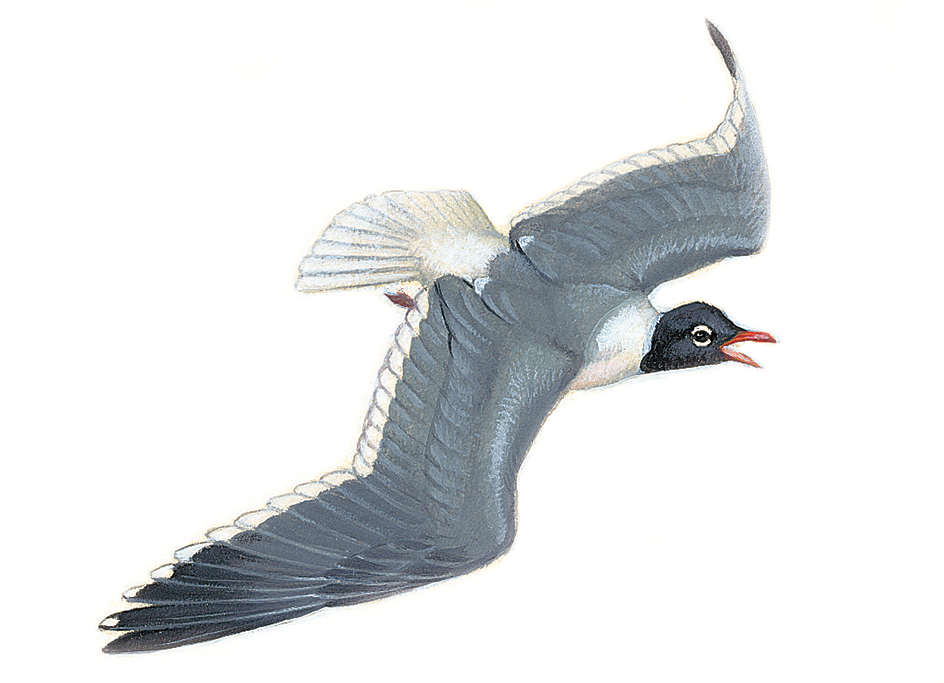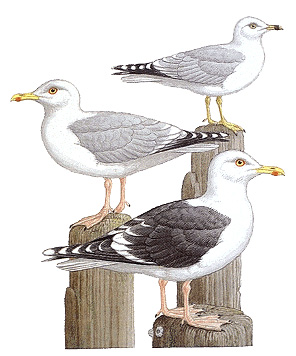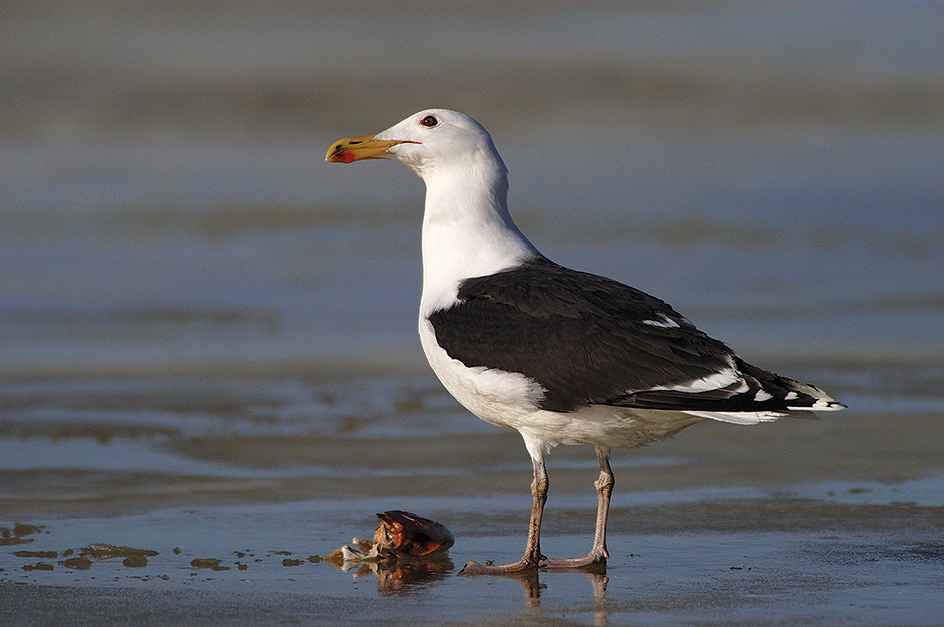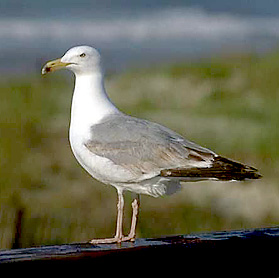Gull is any of a group of long-winged birds that live around water. Gulls commonly occur along coasts, large inland lakes, or by inland marshes or wetlands. They have sleek bodies that range from 10 to 31 inches (25 to 79 centimeters) long. A gull’s wingspread typically measures 36 to 60 inches (90 to 150 centimeters) across. Gulls are closely related to water birds called terns.

The adults of many gull species (kinds) have pearl-gray coloring above and white below. Some species’ feathers also show some black, brown, or gray. The colors change with the season and with the age of the birds. Young birds look grayish or brownish. Some become white the second year, while others may not grow adult feathers until they reach 4 years of age.
Habits.
Many species of gulls are migratory. They fly to warm regions in the winter and fly back north to breed in the summer. Large colonies may be seen where their breeding places have not been disturbed. The female gull lays one to four grayish or greenish-brown spotted eggs. Soft, fluffy feathers called down cover the birds when they hatch.
Gulls are scavengers that eat dead or dying fish and other water animals. They also eat insects, rotten meat, the eggs and young of other birds, and certain human garbage. Gulls often follow ships for hours at a time. If food is thrown overboard, the birds swoop down eagerly to the water and pick it from the surface with their hooked bills. Inland gulls may follow farm machinery and eat insects and worms exposed by crop harvesting. Gulls even congregate around garbage dumps.

Kinds of gulls.
Gulls occur worldwide. The most widespread species include the herring gull, which lives throughout the Northern Hemisphere, and the kelp gull, found around much of the Southern Hemisphere. Other common species include the ring-billed gull of North America and the great black-backed gull of Europe, Greenland, and eastern North America. Some less well-known gulls have smaller or more remote ranges. These include the black-billed gull of New Zealand, the rare lava gull of the Galapagos Islands, and the red-legged kittiwake from islands in the Bering Sea.

See also Bird (table: State birds) (Birds of the seacoasts); Instinct (How instinctive behavior works); Jaeger; Kittiwake; Tern.

